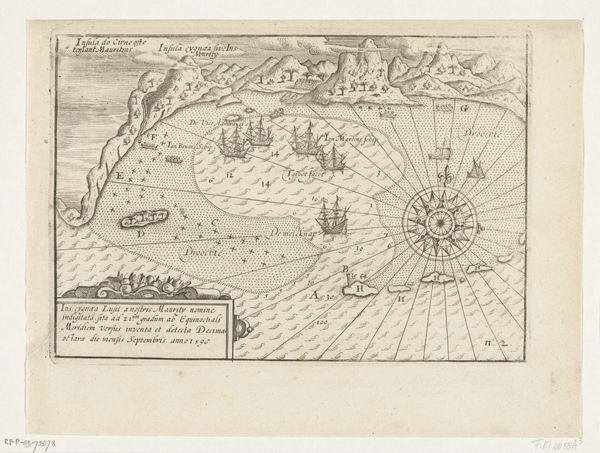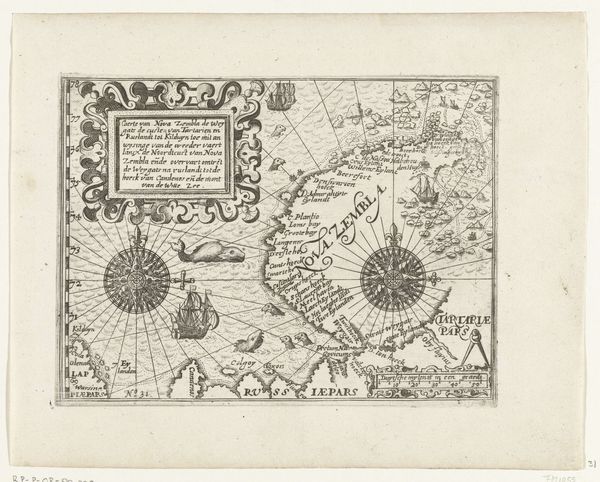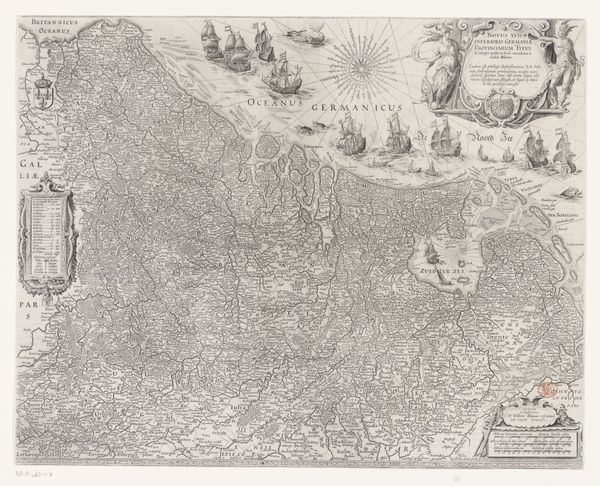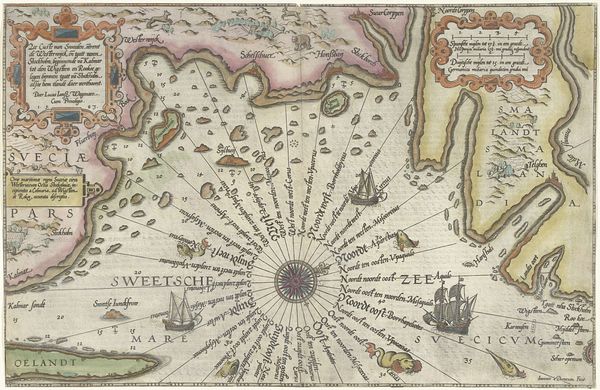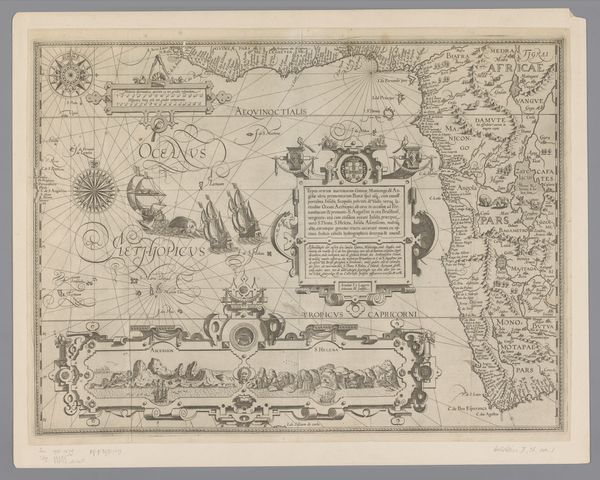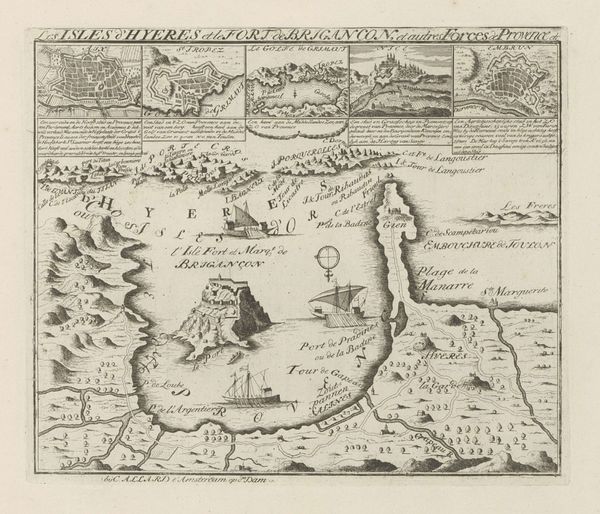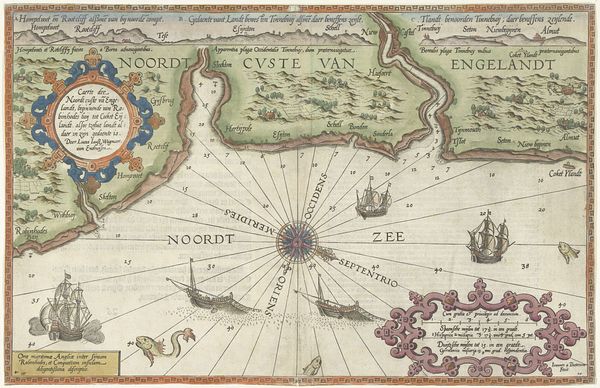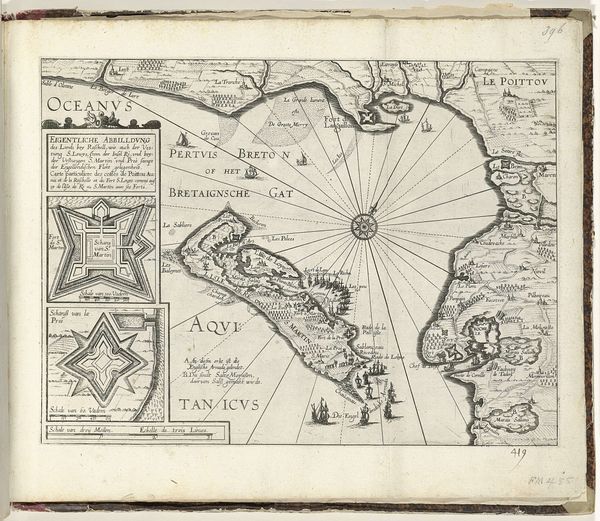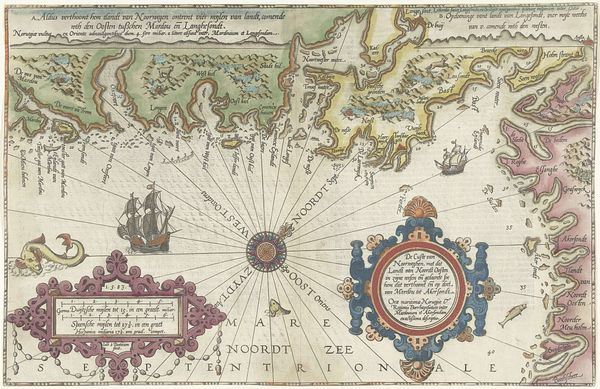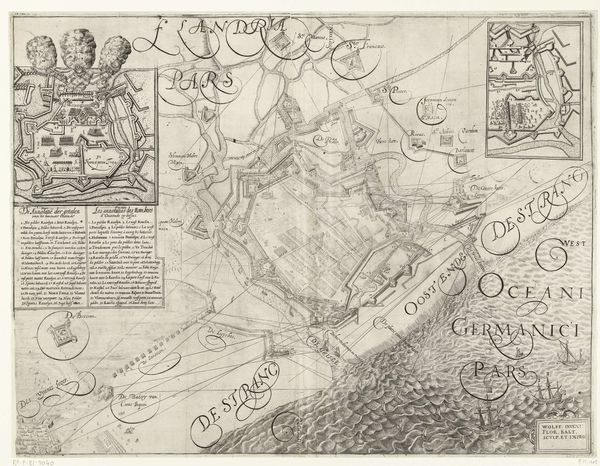
print, engraving
#
dutch-golden-age
# print
#
pen sketch
#
old engraving style
#
landscape
#
line
#
history-painting
#
engraving
Dimensions: height 145 mm, width 220 mm
Copyright: Rijks Museum: Open Domain
Curator: Here we have an intriguing piece titled "Kaartje van Kaap de Goede Hoop, 1595," translating to "Map of the Cape of Good Hope," likely crafted sometime between 1597 and 1646. Its maker remains anonymous, yet it's held here at the Rijksmuseum. Editor: Oh, my word, it's like peering into a historical daydream! It has this wonderfully delicate line work, almost a feeling like looking at someone’s fancy personal doodle about faraway places. There’s this very distinct almost haunting quality about the landscapes and tiny ships, what do you think? Curator: That "haunting" quality resonates. It prompts reflections on colonial expansion, particularly examining how the creation and dissemination of such maps facilitated and justified the exploitation and displacement of indigenous populations in the Cape region. It highlights the politics embedded in map-making as a tool of power and control. Editor: Exactly! The ships don’t feel romantic at all, in that context. I wonder, do you see those sea monsters swimming right next to the ship? They look a bit whimsical, which somehow only sharpens the darkness we are both seeing here. Curator: These decorative elements, including the compass roses and flourishes around place names, were common stylistic features of early maps. Their function was partly aesthetic, yes, to add visual interest, but they also served to project authority and reinforce the narrative of European dominance and control over these newly 'discovered' lands. They create an ideological framework. Editor: Oh wow, I didn’t think of that. It looked a little naive to me. It does make you consider what other subtle messages are encoded into this picture of the Cape, beyond just what's labeled where. Curator: Precisely! It reminds us that these images were powerful tools that normalized particular perspectives while simultaneously obscuring alternative narratives and lived realities. Editor: Looking at the mountains at the top, this feels like one version of this landscape being superimposed over other people’s reality. Okay, I have a new layer of appreciation and questioning around this image now! Thanks for pointing this out! Curator: Indeed. And with that understanding, perhaps we've opened just a few new windows onto history.
Comments
No comments
Be the first to comment and join the conversation on the ultimate creative platform.
